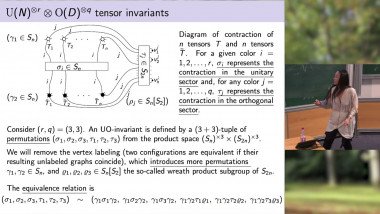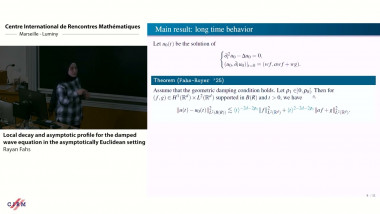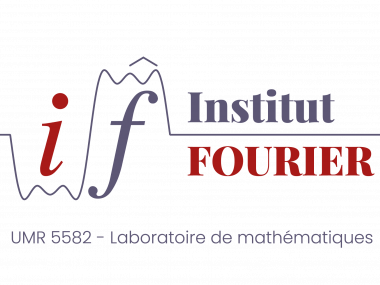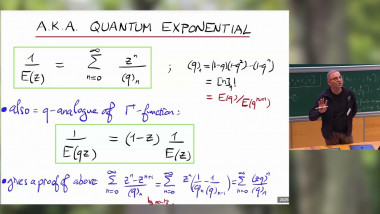Appears in collection : Physics and Mathematics of hydrodynamic and wave turbulence / Physique et Mathématiques de la turbulence hydrodynamique et de la turbulence d'ondes
These lectures review the physical and mathematical foundations of the phenomenon of spontaneous stochasticity. The essence is that stochastic classical equations and/or with randomness in their initial data, when considered along a sequence where the randomness vanishes but also the dynamics becomes singular, can have limits described by a probability measure over the non-unique weak solutions of the limiting deterministic dynamics with deterministic initial data. Furthermore, the limiting probability measure is often universal, independent of the precise sequence considered, so that the stochastic limit is then the well-posed solution of the Cauchy problem for the limiting deterministic dynamics. In the firstlecture, we discuss Lagrangian spontaneous stochasticity, which has its origin in the 1926 paper of Lewis Fry Richardson on turbulent 2-particle dispersion. As first realized by Krzysztof Gawędzki and collaborators in 1997, Lagrangian spontaneous stochasticity is necessary for anomalous dissipation of a scalar advected by a turbulent fluid flow. In the second lecture, we discuss Eulerian spontaneous stochasticity, which was anticipated in the 1969 work of Edward Lorenz on predictability of turbulent flows. After the convex integration studies of De Lellis, Székelyhidi, and others showed that Euler equations with suitable initial data may admit infinitely many, non-unique admissible weak solutions, it became clear that Lorenz' pioneering work could be understood in the framework of spontaneous stochasticity. Finally, in the third lecture we discuss outstanding problems and more recent work on spontaneous stochasticity, both Lagrangian and Eulerian. We focus in particular on statistical-mechanical analogies, on the chaotic dynamical properties necessary to achieve universality,on the use of renormalization group methods to calculate spontaneous statistics in dynamics with scale symmetries, and finally on the challenge of observing spontaneous stochasticity in laboratory experiments.















